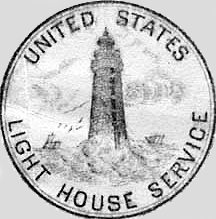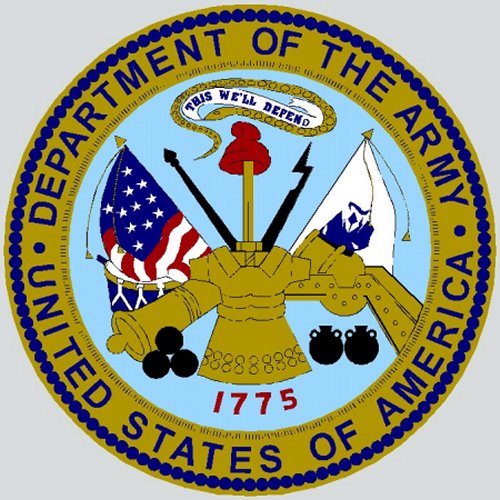NavSource Online:
Section Patrol Craft Photo Archive
USCGC Willow (WAGL 253)
Nan - Roger - Xray - Oboe
ex-USLHS Willow


Edgar F. Luckenbach served both the U.S. Lighthouse Service and U.S. Army


Specifications:
Bids for her construction were first opened in March and May of 1924 but the bids were rejected on both occasions. On 7 June 1924, however, a contract was made with the Dubuque Boat and Boiler Works for constructing and equipping Willow for the sum of $327,000. When accepted by the government she immediately started from the shipyard down river to St. Louis, escorted by the tender Wakerobin to assist her over shallow patches in the river during a prevailing low stage of water. En route Willow underwent trials on Lake Keokuk, Iowa, and then proceeded to St. Louis and from there to New Orleans for docking and final painting. She was placed in commission on 4 October 1927. Her first commanding officer was Captain Tom Good, USLHS. Her next commanding officer, LT Charles B. Berniard, commanded Willow for 14 years. Willow was assigned to the 15th Lighthouse District and was based out of Memphis and tended river aids to navigation from New Orleans to St. Louis. She spent the winter months in New Orleans.
She became a commissioned Coast Guard cutter upon the merger of the Lighthouse Service with the Coast Guard in 1939 and received the designation and hull number WAGL 253. During World War II she continued tending aids to navigation from New Orleans to Memphis. For a description of her duties during World War II, see the following narrative provided in a letter to the USCG Historian's Office by former crewman YN2 Earl F. Stege, USCGR, who served aboard Willow from September, 1943 to February, 1945.
The CGC Willow was built for the U.S. Lighthouse Service, by the a ship-building company in Dubuque, Iowa, in 1927. The Coast Guard took over the duties of the Lighthouse Service in 1930s. The Willow was 200' long, 64 ' wide and drafted 9' of water. The skipper of the Willow was Lt. Charles Berniard. He was the captain of the Willow when it was commissioned. There were several seaman still attached when I came on board. The Willow was the only side-wheeler that the Coast Guard had.
The U.S. Army Corps of Engineers tried to maintain a 9' channel on the lower Mississippi river. (The Willow drafted 9' of water). It was said by pilots and captains of various barges, Navy and Army ships when they saw the Willow they knew the water was safe for passage. Needless to say the Willow would touch bottom numerous times. The under-current of the Mississippi was rapid and churned the sand a lot and sand bars would develop and that effect would change the channel. New markings would have to be made. The boatswain or [coxswain] would sound the river with a rope and a lead weight looking for Mark Twain. Changed to the light structures would have to be made, trees had to be cut, brush also cut (no power tools) axes, scythe, saws. Banks would erode by eddies forming by the current of the river, causing big plots of earth going into the river only tree tops could be seen, some trees would be 30 to 40 feet tall. It took a lot of man power to do the cutting some times a 100' would have to be cut so the barges and ships could see the lights.
The Willow had a 38' boat attached for assistance. The 38' would go where the Willow could not. It was also used to assist the Willow in going up stream when the current was so strong. The Willow would have to put steam up through the smoke stack to get more power. The 38' would be used to take channel light changes to the various barges and ships upon request. It was also used to get the mail for the ship which was forwarded by the DCGO [District Coast Guard Office] in St. Louis, to cities along the Mississippi.
The tour of duty on the Willow for ships office consisted of all personnel actions, payroll actions, [subsistence] reports for officers and enlisted men, transportation requests, inventory reports, purchase orders for open market, mess reports, consolidated reports for month, daily logs, daily channel reports, liberty rosters, seaman duties, life saving duty, pharmacist duty; for minor cuts and bruises, chaplain duties.
The Willow, not a [buoy] tender, usually made four round trips a year. There were shorter trips. When floods would come, the Willow would wait till the rises are over and start at Cairo, Ill., and change lights, usually the Lamplighters would try to re-establish the lights. In 1944 the responsibilities of the Willow were divided, Cairo, Ill., to Rosedale, Miss., and the CGC Wakerobin was assigned duties from Rosedale, Mississippi to Baton Rouge, La. The Wakerobin was a buoy tender.
The U.S. Army Corps of Engineers, was responsible for buoy maintenance in the lower Mississippi river area. The various districts had dredging operations and it was a constant duty, due to the changing of the river bottom.
Earl F. Stege, WWII Coast Guard Reserve Letter to USCG Historian's Office, dated November 28, 1996
On 15 December 1944 Willow collided with USS LST-841 [between Greenville and Vicksburgh, MS] and both ships received considerable damage. At this time she was under the command of LT H. G. Weber. It was decided that the cost of repairs and continued maintenance on Willow was prohibitive and it was decided to decommission her. She was formally decommissioned on 1 March 1945. Her machinery was removed and she was then turned over to the Corps of Engineers who used her as a Quarters Boat (QB-2732), where she served as a messing and berthing facility for laborers, including at one time German POWs who were used as laborers. She was sold into private hands in 1962. In 1971 she was overhauled for use as a lobster factory in British Honduras but apparently that deal fell through. She eventually ended up in Belgium and was renovated in 1990. By 1999 she was on display in London, England.
The following was an article that was published in the March-April 1971 issue of the 2nd Coast Guard District's publication River Currents (pp. 4-5).
FORMER CG CUTTER SOLD DOWN THE RIVER The Waterways Journal recently reported that the former U.S. Lighthouse Service and U.S. Coast Guard Cutter Willow was to be, literally and figuratively, sold down the river. The side-wheel steamboat was going to British Honduras to serve as a lobster factory.
The thought brought to mind pictures of a sweating, rusting hulk swarmed over by sweating, cussing lobstermen, men who were not aware of, or could not care less for the vessel's proud history. To this writer, it seemed an ignoble fate for a ship that was once considered "the pride of the U.S. Lighthouse Service."
Built in 1927 at Dubuque, Iowa, the USLHS Willow was one of the sturdiest and statliest [sic] riverboats afloat. One old timer recalled his first impression of the 200-foot Willow thinking that it was a private yacht, and definitely not a working riverboat. As well constructed as the Willow was, she was decidedly underpowered. Her large side wheels were often inadequate against the heavy Spring winds and currents of the lower Mississippi region. As a result, the return trip from New Orleans, where she wintered, was often delayed.
After 18 years of servicing shore aids on the Lower Mississippi, the Willow was decommissioned by the Coast Guard, and turned over to the U.S. Army Corps of Engineers [CofE] who gutted and stripped her of her dignity as a steamboat.
All propulsion gear, including the huge side-wheels, were removed and sold as scrap. The pilothouse was removed and placed on a CofE crane barge, and a third deck was added to the Willow. Her job now was to provide messing and berthing for CofE work crews, among them, German POW's used as laborers during the late months of World War II.
A fogbank of faulty memory and fiscal fiasco shrouds Willow's history after she was sold by the CofE in 1962. The purchaser, Mr. A. J. Baron of Paducah, Kentucky, envisioned her as a floating restaurant and motel. This plan did not materialize, and the Willow, as a result, remained tied-off at Paducah until 1965. Upon her sale to the W.S. Young Construction Company in 1965, the Willow was towed south to New Orleans by the M/V Southland. Young Construction used the Willow briefly before the company was beset with financial difficulties. The Willow foundered too . . .
While tied-off at LaPlace, Louisiana, Hurricane Betsy beached the 200-foot vessel high on a levee. The Willow remained there suffering the ravages of vandals until she was rescued by the U.S. Marshall in New Orleans. However, this rescue was actually a seizure, and the Willow's troubles were continued. Sold on the Marshall's auction block, she was purchased by Mrs. Freida Parker, who is reported to be a relative of a member of the Young Construction Company.
Mrs. Parker sold the Willow to its present owners in the fall of 1970. The new owners, Belezian Industries, bought her as an investment, hoping for an early and profitable sale. One prospective buyer, as reported in the Waterways Journal, planned to operate the Willow in British Honduras as a lobster factory. After a reported $18,000 was spent in renewing 45' of the ship's bow, however, the deal fell through.
So, that's the situation today. The former USLHS/USCGC Willow remains moored at Harvey, Louisiana . . . without a purpose, and without a foreseeable future. Her asking price: $38,000 . . . maybe less!
| Back to The Main Photo Index | Back to the Lighthouse Service Photo Index |
| Comments, Suggestions, E-mail Webmaster |
|
This page created by Joseph M. Radigan and maintained by David Wright |